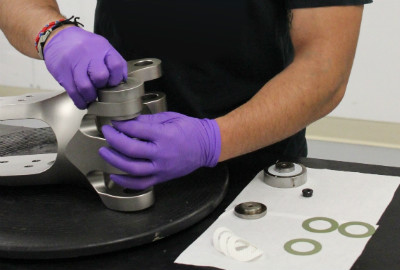The permanent joining of metal components has been something of an essential prerequisite in a variety of industries for much of recent history. Over the years, the technology and processes used to join metals have been evolving and advancing all the time, bringing about an era where high quality results and low production costs are expected as standard.
Nevertheless, a significant number of key players across a variety of manufacturing industries have begun turning to custom adhesives as an alternative to traditional joining. Working with adhesive manufacturers and industrial tape converters, a wide variety of brands and businesses are slowly but surely beginning to discover the benefits of switching to adhesives.
Unsurprisingly, the whole idea can be something of a tricky concept to grasp for those that have been instinctively and effectively using traditional joining techniques for decades. Nevertheless, the switch to adhesives represents the kind of shift that only ever happens one way – there’s no going back once the extraordinary benefits have been experienced first-hand.

1 – Incompatible Metals
For example, there will always be certain metals that are not exactly the best of bedfellows when it comes to traditional joining techniques. If two or more metal components for example were to have very different melting points, the process of joining them using conventional welding would be challenging to say the least. By contrast, modern adhesives eliminate the necessity for any kind of heating whatsoever, ensuring maximum compatibility and inter-material compatibility. What’s more, custom adhesives can be manufactured for purpose to ensure they work flawlessly when put to use.
2 –Efficient Joining
It’s of course no secret that while carrying out an everyday welding job isn’t necessarily a highly expensive process, the same cannot be said for the equipment required or the electricity needed to power the operation. Actually setting up in the first place to weld on an industrial scale can be extremely expensive, counting the costs of repairing, maintaining and generally looking after all such hardware. With custom adhesives on the other hand, quite often it is literally only the adhesive that is needed with no additional tools, accessories or power sources required.
3 – No Additional Finishing
One of the biggest inconveniences associated with the conventional metal joining process is the way in which additional finishing is usually required, in order to minimise the visual impact of the weld itself. Whether it’s a case of the metal becoming discoloured due to the intense heat, an uneven weld resulting in protrusions or any kind of unevenness or damage whatsoever, the joining process more often than not doesn’t end when a weld has been carried out. By contrast, to use custom adhesives to join metals is to have absolutely no impact whatsoever on the overall finish and aesthetic of the components in question, eliminating the need for any additional finishing.
4 –Strong, Sealed Bonds
Whereas conventional welds are generally applied across a somewhat localised or limited area, custom adhesives can be spread out much more evenly. So instead of the component in question simply be joined around the edges for example, the entire surface area that interconnects the two components can be bonded together with extraordinary strength. Along with creating a bond that is infinitely stronger, the process also creates effective seals between the components, in turn minimising the likelihood of rust and corrosion.
5 – Invisible Results
Even with plenty of effort invested in secondary finishing, it can be extremely difficult or even impossible to completely hide the evidence of conventional welding. There may only be slight traces of damage or discolouration, but more often than not, they are there. It’s quite the opposite when it comes to custom adhesives on the other hand as the entire joint is created only where the two materials come into contact with each other and is therefore 100% invisible from the outside.
6 – Sensitive and Fragile Materials
Last up, to use custom adhesives is to immediately open up an incredible world of opportunities when it comes to the different types of materials and components that can be joined. The intensive and somewhat aggressive nature of conventional joining techniques rules a great many fragile materials out of the equation – materials which would inevitably the damaged or even destroyed during the joining process. When using custom adhesives on the other hand, the process is made infinitely gentler and therefore compatible with a limitless range of materials and potentially fragile components.
